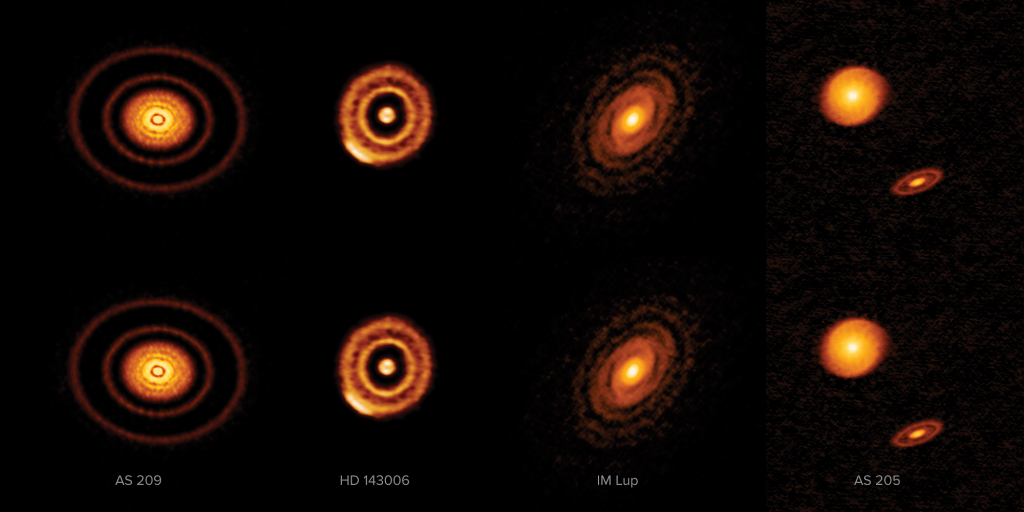Astronomers theorize that when our Sun was still young, it was surrounded by a disc of dust and gas from which the planets eventually formed. It is further theorized that the majority of stars in our Universe are initially surrounded in this way by a " protoplanetary disk ", and that in roughly 30% of cases, these disks will go on to become a planet or system of planets.
Ordinarily, these disks are thought to orbit around the equatorial band (aka. the ecliptic) of a star or system of stars. However, new research conducted by an international group of scientists has discovered the first example of a binary star system where the orientation was flipped and the disk now orbits the stars around their poles (perpendicular to the ecliptic).
For the sake of their study, which was recently published in the scientific journal Nature, the team relied on the Atacama Large Millimeter/sub-millimeter Array (ALMA) to obtain high-resolution images of HD 98800, a quadruple star system about 146.4 light years from Earth. Within this system, they spotted an inner binary pair (HD 98800BaBb) of two Sun-like stars surrounded by a Asteroid Belt-sized disk.
This discovery confirms something that was previously just a theory for astronomers, which was that some debris disks might have a polar configuration. As Dr. Grant M. Kennedy, a Royal Society University Research Fellow from the University of Warwick and the lead author on the study, said in a Warwick press release:
While difficult to observe using conventional optics, debris discs are relatively easy to study in the radio and far-infrared (i.e. millimeter and submilliter) wavelengths, owing to all the radiation they absorb from their parent stars. Dr. Kennedy and his fellow researchers relied on ALMA's renowned ability to study objects in these wavelengths to determine the orientation of HD 98800BaBb's protoplanetary circumbinary disk.
The orbit of the binary was already known thanks to previous research that determined how the stars orbit in relation to one another. By combing this with the data obtained by ALMA, Dr. Kennedy and his team were able to establish that the orientation of the debris disk was consistent with a perfectly polar orbit. This meant that while the two stars orbit each other on one plane, the disk orbits on a plane perpendicular to them.
The most exciting aspect of this find, according to Dr. Kennedy, is that it demonstrates that planets can form under radically different conditions than those we are familiar with. As he put it:
"Weird" is certainly an accurate description! Imagine, if you will, planets where a bright ring appears at night, reaches from the bottom of the horizon and extends all the way overhead. The diurnal cycle would also be very different, since the two stars move across the sky both vertically and horizontally in the course of a year. And at certain times of the year, only one star would be apparent as they orbited each other.
The polar configuration would also mean some unusual seasonal variations, where different latitudes would receive more or less illumination throughout the planet's orbital period. Combined with the planet's own rotation, temperatures and daylight conditions would vary considerably around the equator. Depending on the orbital period, the polar regions might experience summers and winters for years at a time.
This latest discovery indicates that in addition to having exotic compositions and environments, extra-solar planets may also experience exotic orbits. As Dr. Daniel Price, an Associate Professor and ARC Future Fellow at the Monash Center for Astrophysics (MoCA) and a co-author on the paper, explained:
In addition to being a scientific first that validates predictions made by astronomers, this latest discovery could also teach us a great deal about how planets can form in other solar systems. Since orbital and diurnal cycles are a major factor when it comes to life on Earth, perhaps this systems and others like it could also teach us a thing or two about how life can emerge on other planets.
*Further Reading: University of Warwick, Nature*
 Universe Today
Universe Today



